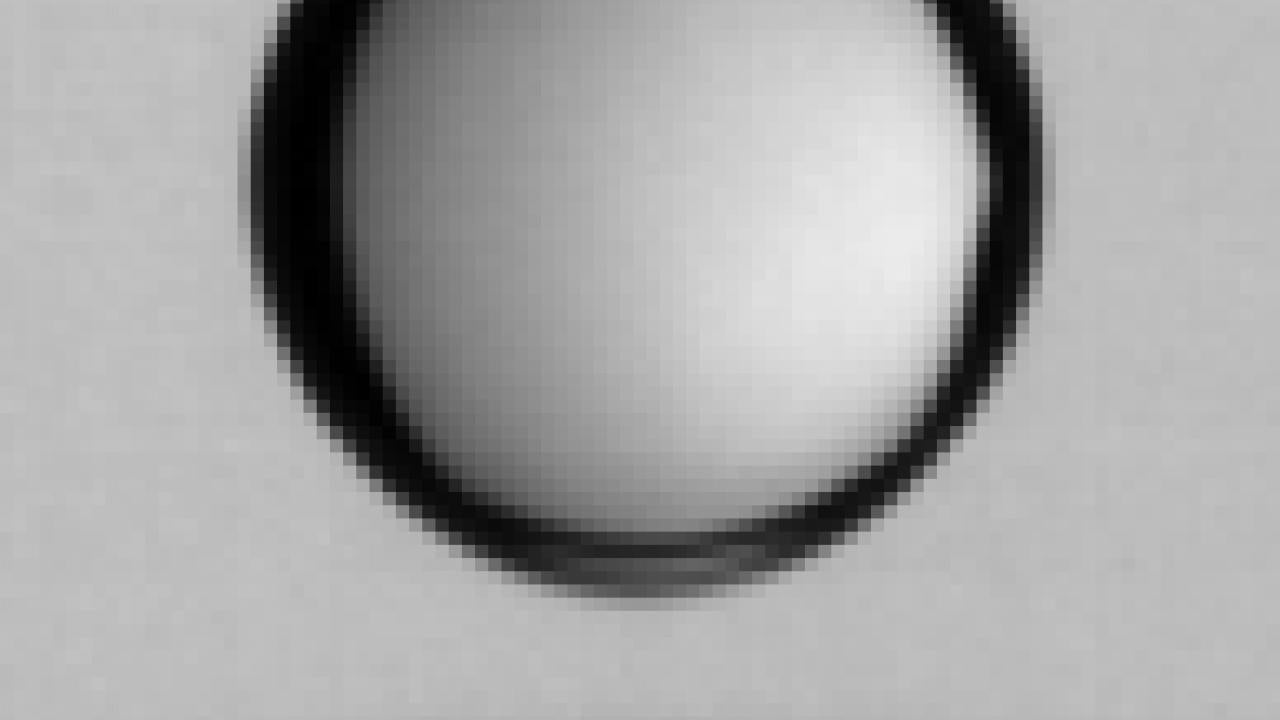Whether gazing into lava lamps or watching balsamic vinegar splash onto a plate of trendy olive oil, people have long been transfixed by the seemingly mystical way that droplets of one liquid find each other and glom together within another liquid.
This merging of liquid droplets, a process called coalescence, is governed by fundamental physical principles, and conventional scientific wisdom has held that applying an electrical field invariably assists coalescence of droplets.
But a new study, conducted at Harvard University and led by a chemical engineer now at UC Davis, shows that there is a point at which an increased electrical field actually keeps droplets from coalescing.
These surprising findings, published in the Sept. 17 issue of the journal Nature, could lead to improved applications in diverse fields including microchip manufacturing, biofuel and crude oil purification, and food oil processing. The research also increases our understanding of atmospheric conduction.
“Electrically induced movement of liquid droplets can be observed in storm cloud formation, commercial ink-jet printing, petroleum and vegetable oil dehydration and many other processes,” said William Ristenpart, an assistant professor in the UC Davis departments of Chemical Engineering and Materials Science, and Food Science and Technology.
“It has long been assumed that oppositely charged droplets experience an attractive force that encourages them to coalesce,” he said. “This study, however, demonstrates that while droplets move toward each other when a low-strength electrical field is applied, those same droplets are actually repelled from one another after they make contact under higher-strength electrical fields.”
Collaborating on the study with Ristenpart were Howard Stone, now the Donald R. Dixon and Elizabeth W. Dixon Professor in Mechanical and Aerospace Engineering at Princeton University; Andrew Belmonte, an associate professor of mathematics at Pennsylvania State University; Franklin Dollar, now a doctoral candidate at the University of Michigan Ann Arbor; and James Bird, a doctoral candidate at Harvard University’s School of Engineering and Applied Sciences.
The research team observed that, under strong electrical fields, water droplets that were placed in a small cylinder of oil, with an electrode at the top and bottom, appeared to bounce off each other. High-speed video and still images revealed that, between bouncing, a temporary fluid “bridge” formed between the meniscus, or curved surface, of each droplet.
That temporary bridge, which existed for less than 80 microseconds and then disappeared, seems to have been the conduit for transferring an electrical charge between the droplets.
“It appears that the charge from the electrode at the top of the cylinder caused one droplet to fall through the oil until it momentarily made contact with another droplet, and then quickly bounced back up,” Ristenpart said.
“The fact that the top droplet was able to move upward, against the force of gravity, suggests there was a change in the net electrical charge of the droplet and that the charge was transmitted during the bounce.”
The researchers propose that strong electrical fields create “steep” fluid bridges between the two water droplets, resulting in a combined structure that resembles an elongated hourglass. The shape of such steep bridges does not hold up well against the surface tension or capillary pressure that exists where the two droplets meet. As a result, the bridge exists only long enough for the transmission of the electrical charge between the droplets and then quickly breaks off.
Ristenpart’s group at Davis recently received a $100,000 grant from the American Chemical Society’s Petroleum Research Fund to continue investigations of charge transfer in the context of crude oil and biofuels.
"This study offers a new model for better understanding the behavior of charged liquid drops, which we hope will lead to the development of more efficient manufacturing and processing techniques in a variety of industries,” Ristenpart said.
Media Resources
Dave Jones, Dateline, 530-752-6556, dljones@ucdavis.edu
